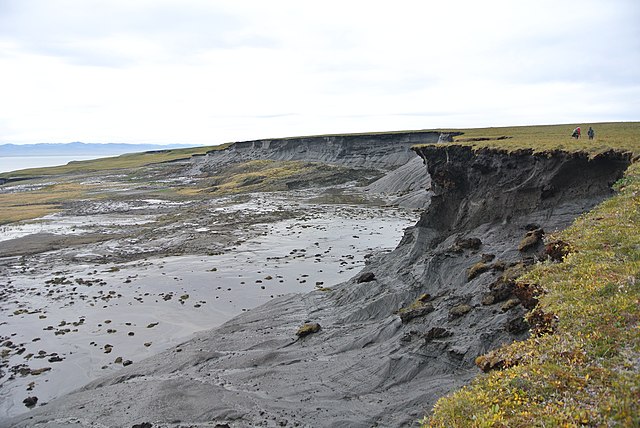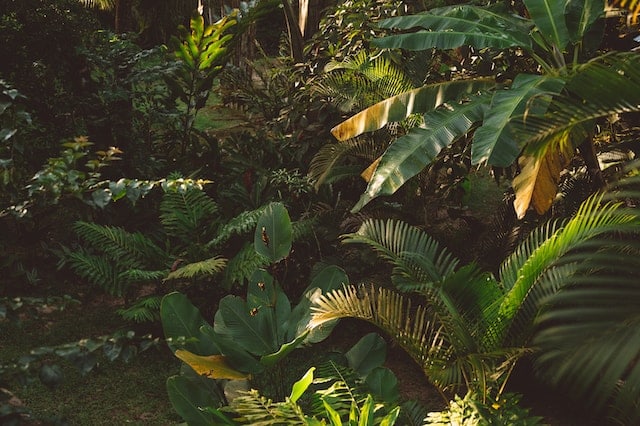
Fixing the Climate Crisis, Part 2
By Robert Hunziker
How to Fix the Climate Crisis is a multifaceted affair; a National Geographic November 2023 article, The Race to Save the Planet, Can Technology Help Fix the Climate Crisis? that this two-part series is based upon focuses on the nexus of trouble, which is excessive levels of greenhouse gases, specifically CO2. Technologies to fix excessive CO2 in the atmosphere, as mentioned in the National Geographic article, are described herein:
The scope of the CO2 problem is very difficult to comprehend. The planet is big, and any solution involves the entire planet, or it is no solution at all. For example, CO2 disperses evenly throughout the planet. A Marshall Plan solution that bailed out Europe post WWII would simply be way too small. To effectively do the job requires an ultra-massive cooperative effort by nations of the world. In that regard, if the results of 30 years of annual UN climate conferences on climate change, like COP 21 at Paris in 2015, indicate what to expect, then the outlook is bleak. COP agreements over the past 30 years have not been kept by countries of the world, which ignore the biggest risks of all time to life on the planet.
There is no practical way to remove carbon from the atmosphere with enough umph to meet IPCC guidelines without major governments joining together. This is the biggest drag on combating excessive climate change conditions that are well beyond the forces of nature.
In pursuit of the best ways to fix the climate crisis Sam Howe Verhovek, author of Clear the Air/National Geographic visited the intellectual godfather of carbon removal, Klaus Lackner in Tempe, head of the Center for Negative Carbon Emissions at Arizona State University. Dr. Lackner is experimenting with “mechanical trees,” which he claims are a thousand times more efficient at carbon removal than real trees and better at keeping it stored away. “As an evangelist for direct air capture, Lackner says the key question is not whether the technology works, but what price society will be willing to pay for it.” This has been and remains a major impediment. After all, it’s the biggest project in human history that requires all hands-on deck and trillions of investible funds.
Several nascent carbon removal and capture projects are now active worldwide. One of the largest is Climeworks, a Swiss company that received funding of $650 million from Microsoft, JP Morgan and Stripe. It’s the largest private investment the industry has seen so far. Funders are purchasing “verified offsets” which allows them to claim they’re operating a carbon neutral business. The company builds modular units each the size of a standard shipping container that captures carbon directly out of the air. The containers can be delivered by ship, rail, or truck and interconnected like Lego blocks. The company envisions thousands of units sucking up enough CO2 laced air to remove one megaton (a million metric tons) annually by 2030, 100 megatons/year by 2040, and by 2050 one gigaton (a billion metric tons) annually. For reference purposes, worldwide CO2 emissions in 2022 were 37.5 billion metric tons (GtCo2). According to The World Counts: From 1850 to 2019, 2,400 gigatons of CO2 were emitted by human activity. Around 950 gigatons went into the atmosphere. The rest has been absorbed by oceans and land. It is only too obvious that emissions must be stopped at the source in addition to removal technologies in order to meet IPCC guidelines of halting temperature increases to 2°C above pre-industrial.
Alas, Europe is warming faster than the global average. The mean annual temperature over European land the last decade has been running 2.04°C to 2.10°C warmer than during the pre-industrial period. (Source: Global and European Temperatures, European Environment Agency, June 29, 2023)
The EU is showing the world what to expect at 2°C above pre-industrial, i.e., ecosystems dry-out, including major water reservoirs and major river systems, Rhine, Po, Danube, and Loire nearly dried out in the summer of 2022 with major commercial barges stuck in mud, as over 100 communities in France and Italy ran out of ground water, and of special concern, France’s celebrated nuclear power industry (70% of total electricity) was threatened with shutdowns, and actually down-shifted, because of low water resources, as France for the first time in 40 years became a net importer of electricity (Source: Climate Change, Water Scarcity Jeopardizing French Nuclear Fleet, Balkan Green Energy News, March 24, 2023). This alone should be enough for nations to declare a red alert to stop fossil fuel emissions as soon as practicable, at the least, but no such declaration has been posted. Ironically, the world looks for nuclear reactors to help solve global warming.
Climeworks makes money by selling credits to companies like airlines or oil companies or any company that wants to claim carbon neutrality. At today’s prices to remove carbon, Climeworks revenues in 2050 would surpass Apple’s revenues, but Climeworks expects the price per ton of carbon removal to drop precipitously by 2050, as the market matures.
It remains to be seen if the carbon capture business can successfully scale up to meaningful size fast enough to inhibit what has become the equivalent of a runaway freight train called rapid global warming. To date, carbon capture devices in the world are sucking up 4% of what’s needed to be accomplished by 2030 to be on track to hopefully hold global temperatures down to something that’s livable. Obviously, at only 4% of what’s needed, there does not appear to be a panic-driven movement to come to grips with the biggest threat to life since the last big asteroid collided 65 million years ago (the Academy Award Best Picture nominee Don’t Look Up, Netflix, 2021 deals with this issue).
Meanwhile, deep in the outback of Australia, Aspira DAC, a company that’s a unit of Corporate Carbon, which also sells credits for certified carbon removal, is planning on a massive project of thousands of modules in the barren outback. Funded by Facebook, Google, and Stripe, Aspira is currently building test units the size and shape of a two-person tent with solar panels on either side which provides power for a fan that blows air across a polymer honeycomb device that filters CO2 that’s ultimately released into a collection system. Each module is designed to capture two metric tons of CO2. Aspira believes there could be “a million or two” modules over time. But first, when installations start next year, they are hopeful that the technology will work according to plan.
As mentioned in Part 1 of this two-part series, decades of failed carbon capture projects indicate controlling carbon is far more temperamental than backers let on. Capturing carbon is typically an eight-step process from production of CO2 to burial. At each stage, there’s a potential pitfall. Several major corporations have abandoned carbon capture projects (see Part 1) after spending billions.
Vesta, a San Francisco-based company, is experimenting with finely ground olivine, a magnesium iron silicate found in Earth’s mantle. In water, it absorbs CO2 in a natural chemical process that yields bicarbonates that in turn sequester carbon. If successful, it could bring carbon removal to two-thirds of the planet, the oceans.
A New South Wales company named PhycoHealth is working on an elaborate plan to use seaweed to remove carbon. Pound for pound, seaweed is 40 times more efficient than trees at sequestering carbon. According to PhycoHealth, “if we use the natural infrastructure of the ocean and create large seaweed islands, we could see a dramatic decrease in the main driver of climate change.” The company claims that seaweed has miraculous powers to heal the planet. Still, PhycoHealth, like all companies working on carbon removal, complains about the failure of governments to get involved enough to make a big enough difference. Like all nascent technology companies, government funding will be required to meet the scale of operations.
Another experimental solution bypasses carbon emissions by creating hydrocarbon fuels from nothing but sunlight and the air surrounding us. This is called the holy grail of carbon capture, a project of Aldo Steinfeld at ETH Zurich, Europe’s MIT. Aldo specializes in sustainable energy systems. Using a dodecagonal-shaped collection of mirrored panels the size of a beach umbrella, sunlight is sharply focused into an intense beam that splits CO2 and water into component parts in two separate streams, carbon monoxide, which is carbon dioxide reduction, and hydrogen in one stream, which forms the basis for “solar synfuel” and oxygen vented in the other. Thus, creating solar-synthesized fuel. According to Steinfeld: “The circular economy of it is the beautiful thing… Carbon doesn’t get added to the atmosphere — it’s getting collected and reused.” However, commercialization of Steinfeld’s solar synfuel demands a huge number of expensive solar panels to create a tiny amount of fuel. Once again, the scale of operations is an impediment that’s challenging to overcome. Even though Steinfeld’s energy utopia is possible via solar synfuel, it’s years, if not decades, away.
Paradoxically, the good news about global warming is its universal impact, bringing forward the sharpest minds to find solutions. It is not a hidden monster waiting to spring loose on humanity. We know all about it. The biggest obstacle to fixing the climate crisis is politics that’s been bought (lock, stock, and barrel) by the biggest beneficiaries of fossil fuel production.
According to Al Gore in a recent TED speech: To solve the persistent problem of excessive fossil fuel emissions, he suggests looking at the obstacles, which includes unrelenting opposition by the fossil fuel industry. Even though many people think they are onside and trying to help, he begs to differ: “Let me tell you … on every piece of legislation at every level of government, they’re in there with their lobbyists and revolving door colleagues doing everything possible to slow down progress. They have used fraud on a massive scale; they’ve used falsehoods on an industrial scale, and they’ve used their legacy political and economic networks… to capture the policy-making process.”
Al Gore: “The climate crisis is a fossil fuel crisis. There’s no other way to look at it.”
Yet, as an aside, many climate scientists insist there’s much more at stake than fossil fuels. They claim an equally big issue, maybe more challenging, is too many people living on a finite resource, also known as the human footprint, which is now using 1.75 Earths to exist (Global Footprint Network); the lines crossed into negative territory in 1977. This “experiment” with nature has no historical precedent; none of the prior five extinctions in Earth’s paleoclimatic history happened by intentional abuse, misuse, and destruction of nature’s ecosystems. That’s unique to Homo sapiens. Indeed, it’s doubtful “the experiment” will leave a legacy.
——————-
This article was originally published on November 10, 2023 © Counterpunch
Robert Hunziker lives in Los Angeles and can be reached at rlhunziker@gmail.com.
Note: This article will also be posted on the Facing Future Now! Facebook group. If you would like to comment on this article, please go to the Facebook group and post your comments there under the article posting.
Facing Future Now! https://www.facebook.com/groups/530755592068234
——————
On the agenda for next week: The COP28 Showdown – An article about what to expect at the most controversial UN climate conference of all time at Expo City, Dubai – The 2023 United Nations Climate Change Conference or Conference of the Parties of the UNFCCC, more commonly referred to as COP28 from November 30th until December 12th, 2023.








